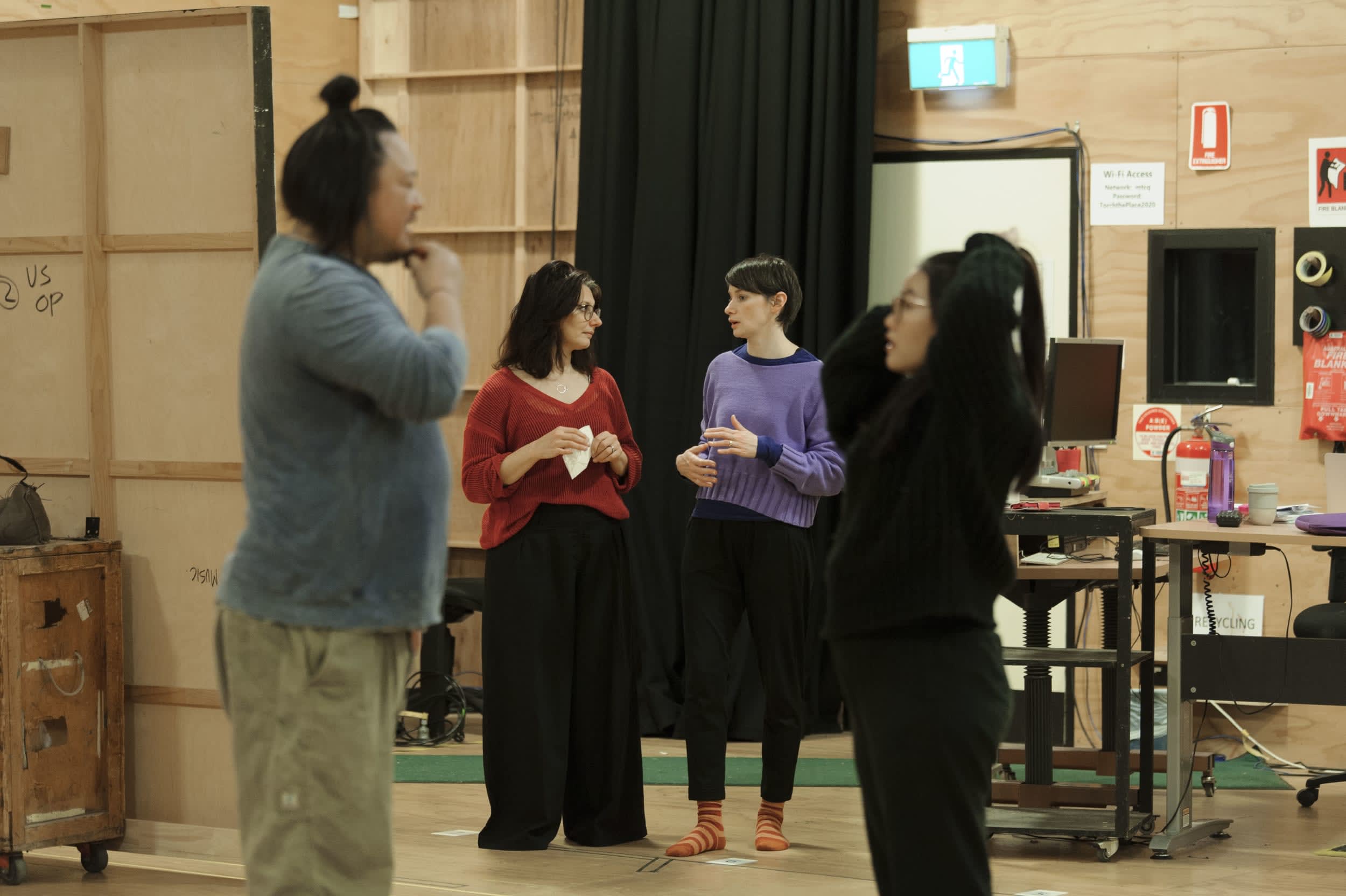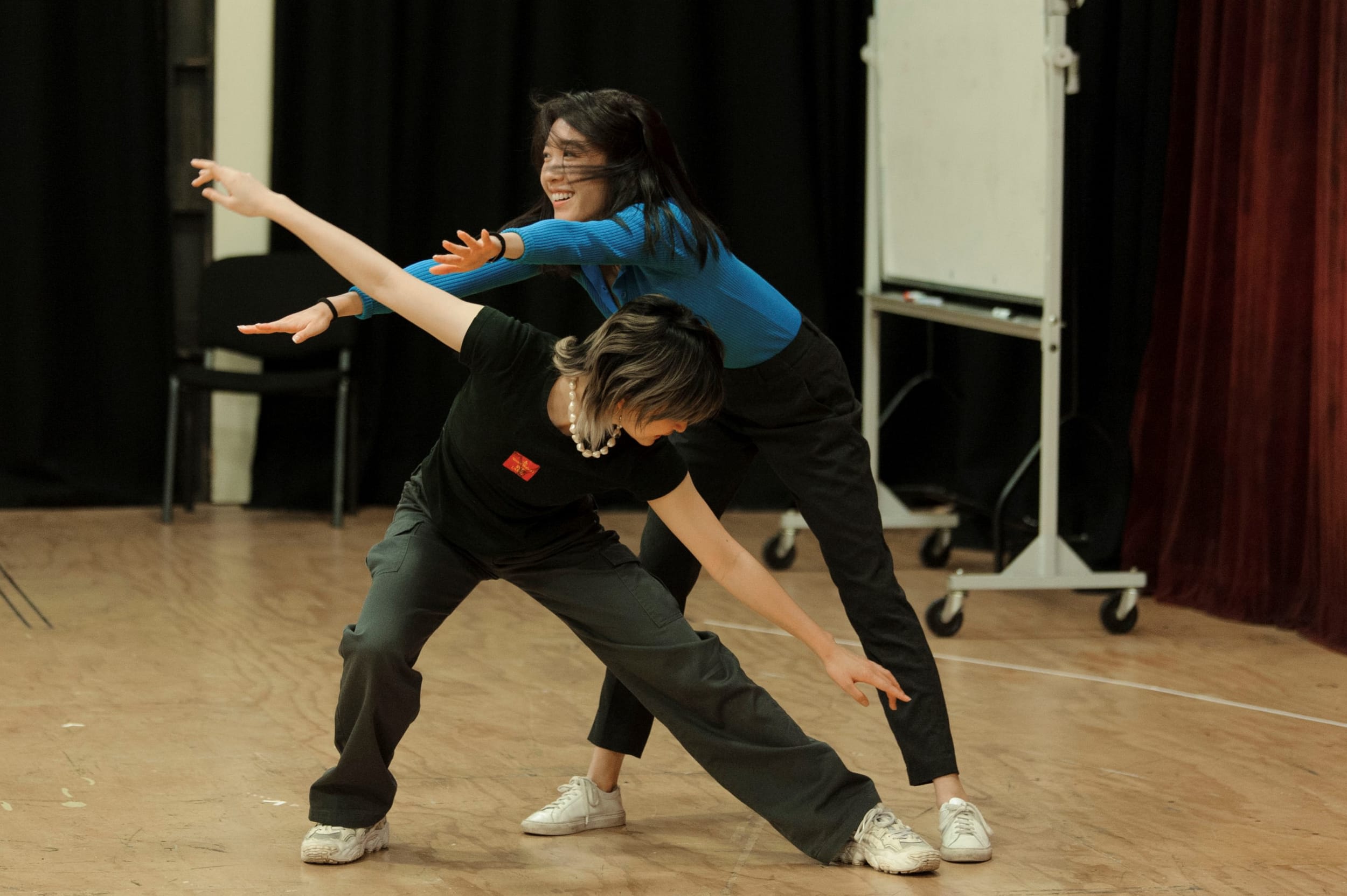As the Movement Director on Laurinda, Xanthe Beesley works with the cast on the physical dramaturgy of the play. In this Q&A, she discusses her process and explains an exercise called 'Best Worst Dance Move Ever'.
How would you describe Laurinda in your own words?
We meet Lucy on the verge of an existential crisis as she begins a journey of confronting her past as a young person desperately trying to fit in. With the help of a ‘guide’ Lucy travels to observe herself growing up to better understand who she was as a teen, to reconcile her past with the woman she has become. It’s a funny and touching story of finding compassion for yourself and for others, of searching for your voice and finding the courage to be you.
What is your role as Movement Director on this production?
As Movement Director, it’s my job to help build ensemble, to work with the cast devising movement material for moments in the show, and to support the development of character through physical processes. I also always have an eye on the physicality and safety of the actors, the physical dramaturgy or meaning making of the movement and how that works in with the staging of the production.
How do you build ensemble through movement?
We start early in the process (day 1 to be exact!) with physical warmups, games and a whole raft of movement explorations. These explorations are pertinent to the aims we have as a group and are one way we explore the content and themes of the play. We slowly work to awaken the movement potential of the piece and some physical vocabulary and motifs to draw upon throughout the rehearsals.
 Roy Phung, Petra Kalive, Xanthe Beesley and Chi Nguyen in rehearsal. Photo: Sarah Walker
Roy Phung, Petra Kalive, Xanthe Beesley and Chi Nguyen in rehearsal. Photo: Sarah Walker
What’s an example of a movement exercise you’re doing in rehearsal?
There's one exercise I’ve called ‘Best Worst Dance Move Ever’. Standing in a circle the actors are asked to offer an over-the-top dance move to the best (or worst) 90s tune ever. Everyone is encouraged to copy and clap loudly in support of the performer. This is a fun way to kick off a devising process, as nothing can ever be ‘wrong’, it’s all for the joy of it and there’s lots of positive reinforcement and laughter. For our process, this exercise acted as an entry point into the 90s setting and from this simple exercise we already had some moves to add to the dance moments in the work.
How is movement helping to anchor the story in a particular time and place?
The play takes place in Australia in the 1990s, but also in two distinct suburbs of Melbourne and, importantly, Lucy’s brain-space. There are a couple of moments when we allude to the popular culture of the 90s which helps define the setting and tone of the era. What’s needed for this work is a playfully ambiguous approach to movement, which builds a fluid language that we draw on throughout the process. This helps us to spring quickly from the present day to a memory space or bounce from a party scene to a classroom and slip between 38-year-old Lucy and her younger self. As we play in Lucy’s imagination, we use movement techniques like slow motion, heightened characterisation, dance sequences and dynamic changes which work together to build a semi-surreal movement landscape and offer the poetic licence that allows us to be inside someone’s brain.
 Jenny Zhou and Gemma Chua-Tran in rehearsal. Photo: Sarah Walker
Jenny Zhou and Gemma Chua-Tran in rehearsal. Photo: Sarah Walker
Do you recreate or re-interpret movement and dance styles from past decades?
You’ll see a little bit of 90s dance, which comes from popular culture of the era. The cast also spent time with traditional Vietnamese dancers, which enabled them to explore cultural dance and weave this through some of the movement moments in the play.
How do you collaborate with the cast and creatives in rehearsal?
As a theatre maker, I’m most interested in collaboration – so I’m always looking to draw out the ideas of the amazing actors we work with. This is a process of offering and responding, making an offer of a task, activity or exercise and then allowing the cast to respond to this in their own way. Sometimes I’ll do the responding, seeing what material has been created and offering movement ideas to clarify, or shape, add some tone or dynamic to a moment – it's a process of ‘Yes And’ between us all. Bit by bit, this builds the play.
Laurinda is on stage at Southbank Theatre, The Sumner 6 Aug – 10 Sep. Learn more.
Published on 20 July 2022





